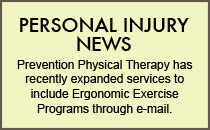
TEN'S & NMES UNITS
TENS & NMES units both operate on the use of electricity as a healing agent. Electrical stimulation can be used to benefit you in the following areas:
- Muscular re-education
- Muscular strengthening
- Wound care
- Pain reduction
- Muscle pumping contractions to reduce edema
- Increase range of motion
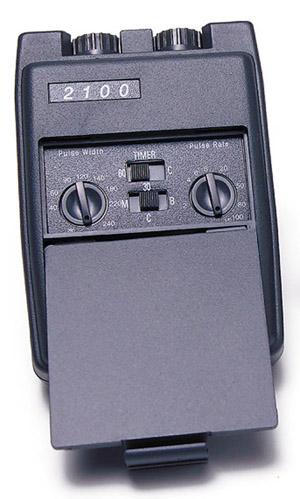 TENS (Transcutaneous Electrical Nerve Stimulator) is used for, the main focus of, decreasing pain through the stimulation of nerves. This stimulation causes the nerve fibers transmitting pain to the brain be blocked. The brain does not receive the pain signals from the injury. TENS provides this stimulation allowing for nerves to be stimulated in order to decrease pain levels from chronic conditions. This pain can be anywhere in the body from the arms, to your back, down to your legs. TENS units are a little larger than a average pager. Below is a picture of what a TENS unit looks like: TENS (Transcutaneous Electrical Nerve Stimulator) is used for, the main focus of, decreasing pain through the stimulation of nerves. This stimulation causes the nerve fibers transmitting pain to the brain be blocked. The brain does not receive the pain signals from the injury. TENS provides this stimulation allowing for nerves to be stimulated in order to decrease pain levels from chronic conditions. This pain can be anywhere in the body from the arms, to your back, down to your legs. TENS units are a little larger than a average pager. Below is a picture of what a TENS unit looks like:
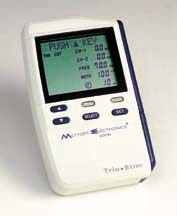 NMES (Neuromuscular Electrical Stimulation) is used for the purposes of creating muscle contractions through electricity. NMES is able to be used in rehabilitation to increase strength and range of motion after injuries. After an injury the body causes inflammation which can possibly decrease range of motion. With the immobilization of a part of our body, muscles can begin to decrease in flexibility and strength. NMES has been shown clinically to promote muscular strength and flexibility. This is important when rehabilitation begins, in order to treat you efficiently and effectively. Below are illustrations of a NMES units. NMES (Neuromuscular Electrical Stimulation) is used for the purposes of creating muscle contractions through electricity. NMES is able to be used in rehabilitation to increase strength and range of motion after injuries. After an injury the body causes inflammation which can possibly decrease range of motion. With the immobilization of a part of our body, muscles can begin to decrease in flexibility and strength. NMES has been shown clinically to promote muscular strength and flexibility. This is important when rehabilitation begins, in order to treat you efficiently and effectively. Below are illustrations of a NMES units.
Return to the top of the page
BIOFEEDBACK
Biofeedback is clinically known as Electro-myographic Biofeedback. Biofeedback is a therapeutic instrument that measures the electrical activity (electromyographic activity) of the muscles where the machine is connected to the body. This allows a therapist to view the active control of that muscle both visually on the machine's screen and audibly through sounds transmitted from the machine. Below are some of the uses for biofeedback training and a picture of a typical biofeedback machine.
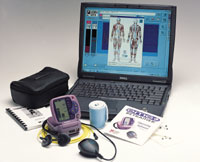
Muscle Re-education
Self relaxation from muscle spasms and muscle guarding
Pain Reduction
Used for hemiplegia, spinal cord injury, spasticity, cerebral palsy,
facial paralysis, and incontinence
Return to the top of the page
ULTRASOUND
Ultrasound is not only used for obtaining images of the inside of our bodies, but also for rehabilitation purposes. Ultrasound is a valuable tool in the rehabilitation of injuries primarily for repair of soft tissues and for the relief of pain.* Ultrasound uses the properties of sound to increase the temperature of your skin, but also the temperature at the muscles, tendons, and deep soft tissues in your body. This deep heating effects increases blood flow and promotes healing. The list below demonstrates the uses for ultrasound:
Soft tissue healing
Increasing flexibility of muscles
Decreasing inflammation
Healing of acute fractured bones
Pain reduction
These various uses for Ultrasound demonstrate the importance of this therapeutic modality. Below is a picture of a typical ultrasound machine:
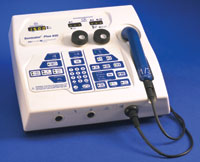
*Information from Therapeutic Modalities for Allied Health Professionals by William E. Prentice*
Return to the top of the page
MANUAL THERAPY
Prevention Physical Therapy provides the highest standards of hands on skills (Manual Therapy) for our patients. We believe that hands on skills will allow for the therapist to accurately locate our patients problems and address them accordingly. Manual Therapy covers these basic approaches for treatment:
Myofascial Release
Therapeutic Massage
Joint Mobilization
Traction
PNF (Proprioceptive Neuromuscular Techniques)
Manual Passive Range of Motion
Manual therapy allows for the therapist to utilize years of education, training, and experience to heal your body and relieve your pain. Manual therapy also allows for hands on therapy to be implemented that will increase your comfort with the therapist. Instead of being place on machines and then told to leave, Prevention Physical Therapy insists on all therapists providing manual therapy as long as the rehabilitation calls for the above mentioned approaches.
Return to the top of the page
SPINAL & CERVICAL TRACTION
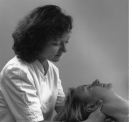 Traction is a form of Manual therapy, however, traction provides the release of pressure of nerves from their bony enclosures. Traction is a force that is externally supplied to you which allows for separation of your vertebrae of your cervical, thoracic, and lumbar spine. Traction allows for stretching to occur to the muscles and ligaments of the spine, mobilization of the vertebrae, and increase in inter-vertebral space. The following benefits can result from either manual or mechanical traction: Traction is a form of Manual therapy, however, traction provides the release of pressure of nerves from their bony enclosures. Traction is a force that is externally supplied to you which allows for separation of your vertebrae of your cervical, thoracic, and lumbar spine. Traction allows for stretching to occur to the muscles and ligaments of the spine, mobilization of the vertebrae, and increase in inter-vertebral space. The following benefits can result from either manual or mechanical traction:
- Relief of nerve compression from disc herniations
- Return inter-vertebral disc nucleus to a central position
- Traction can relieve pressure on a nerve root
- Stretch paraspinal musculature
- Increases joint proprioception
- Relieves compression effects of normal posture
- Decrease muscular spasms caused from joint misalignment
Return to the top of the page
Click on a link below to travel to a different PPT Department
Pediatrics | Personal Injury | Industrial & Ergonomic
Physical Rehabilitation | Modalities Utilized | Fitness Programs | Personal Training | Home Health
Orthopedic | Neurological | Cardiac & Pulmonary | Home Exercises | TENS & NMES
Biofeedback | Ultrasound | Manual Therapy | Traction | Automobile Accidents
Slip & Fall | Sports Injury | Worker's Compensation | Post-Surgical Rehabilitation | Tip of the Month
Doctor's Info | News & Presentations | Links
©2010 Prevention Physical Therapy. All Rights Reserved. |


 TENS (Transcutaneous Electrical Nerve Stimulator) is used for, the main focus of, decreasing pain through the stimulation of nerves. This stimulation causes the nerve fibers transmitting pain to the brain be blocked. The brain does not receive the pain signals from the injury. TENS provides this stimulation allowing for nerves to be stimulated in order to decrease pain levels from chronic conditions. This pain can be anywhere in the body from the arms, to your back, down to your legs. TENS units are a little larger than a average pager. Below is a picture of what a TENS unit looks like:
TENS (Transcutaneous Electrical Nerve Stimulator) is used for, the main focus of, decreasing pain through the stimulation of nerves. This stimulation causes the nerve fibers transmitting pain to the brain be blocked. The brain does not receive the pain signals from the injury. TENS provides this stimulation allowing for nerves to be stimulated in order to decrease pain levels from chronic conditions. This pain can be anywhere in the body from the arms, to your back, down to your legs. TENS units are a little larger than a average pager. Below is a picture of what a TENS unit looks like: NMES (Neuromuscular Electrical Stimulation) is used for the purposes of creating muscle contractions through electricity. NMES is able to be used in rehabilitation to increase strength and range of motion after injuries. After an injury the body causes inflammation which can possibly decrease range of motion. With the immobilization of a part of our body, muscles can begin to decrease in flexibility and strength. NMES has been shown clinically to promote muscular strength and flexibility. This is important when rehabilitation begins, in order to treat you efficiently and effectively. Below are illustrations of a NMES units.
NMES (Neuromuscular Electrical Stimulation) is used for the purposes of creating muscle contractions through electricity. NMES is able to be used in rehabilitation to increase strength and range of motion after injuries. After an injury the body causes inflammation which can possibly decrease range of motion. With the immobilization of a part of our body, muscles can begin to decrease in flexibility and strength. NMES has been shown clinically to promote muscular strength and flexibility. This is important when rehabilitation begins, in order to treat you efficiently and effectively. Below are illustrations of a NMES units.

 Traction is a form of Manual therapy, however, traction provides the release of pressure of nerves from their bony enclosures. Traction is a force that is externally supplied to you which allows for separation of your vertebrae of your cervical, thoracic, and lumbar spine. Traction allows for stretching to occur to the muscles and ligaments of the spine, mobilization of the vertebrae, and increase in inter-vertebral space. The following benefits can result from either manual or mechanical traction:
Traction is a form of Manual therapy, however, traction provides the release of pressure of nerves from their bony enclosures. Traction is a force that is externally supplied to you which allows for separation of your vertebrae of your cervical, thoracic, and lumbar spine. Traction allows for stretching to occur to the muscles and ligaments of the spine, mobilization of the vertebrae, and increase in inter-vertebral space. The following benefits can result from either manual or mechanical traction: